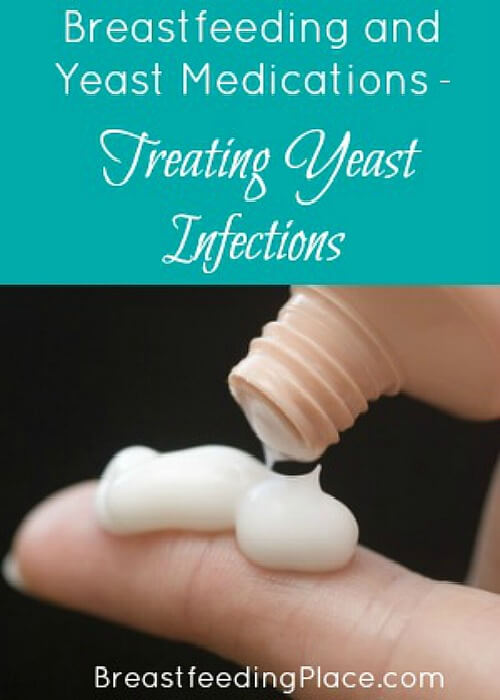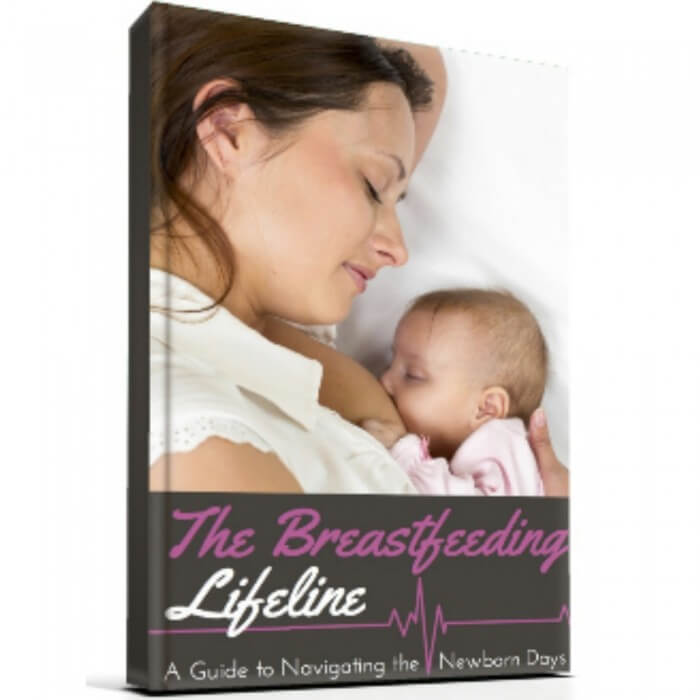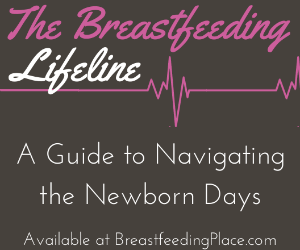You may occasionally meet a very unwelcome visitor during the course of your breastfeeding relationship. That visitor is a nasty fungi known as yeast, and it can make you and your baby miserable. Once you know you’ve got a problem with yeast, you will be wondering about breastfeeding and yeast medications. What’s safe? How can you get rid of this miserable infection? How can you keep it from coming back?

How do I know if I have a yeast infection?
Yeast infections are miserable. You may be familiar with a yeast infection of the vagina, but your nipples can also become infected when you are breastfeeding. If your nipples become infected, your baby’s mouth may also be infected. This is called thrush. Even if you do not see any visible signs of yeast, you will feel it. Many describe it as a burning, searing pain. It can also be itchy. Your nipples may be red and irritated. If your baby has yeast in his mouth, he may be very uncomfortable during nursing and it will be possible to see white patches inside his mouth.
Your baby’s diaper area can also become infected with yeast. When my son was a newborn he had a miserable yeast rash in his diaper area. He had a very red, bumpy rash and I could tell he was very uncomfortable.
Yeast thrives in warm, wet areas. That’s why it is common in the vagina and your nipples when you’re breastfeeding. If you have a yeast infection on your breasts while nursing, you will have to treat your baby as well as yourself.
Breastfeeding and Yeast Medications: What’s Safe?
So now you have established you have a yeast infection, how do you get rid of it? There are a few medications that are safe for eradicating your unwelcome visitor. First, you will need to talk to your doctor. If the pain from the yeast infection in your nipples is severe, you will probably be prescribed an antifungal cream such as:
Mycostatin:
Mycostatin is also known as Nystatin. This is a cream that works by weakening the cell membranes of the yeast. There are rarely side effects associated with Mycostatin, but it is possible to have an allergic reaction. Because it is unabsorbed orally, it is considered safe to use while breastfeeding; however, it has been found to be less effective on thrush.
Clotrimazole:
Clotrimazole comes as a cream and is used to treat thrush. It is usually used five times per day for two weeks to treat oral thrush, and twice a day to treat yeast infections on the skin. This drug is also poorly absorbed orally, so it is considered safe for breastfeeding infants.
Myconazole:
Myconazole is known as the brand name Monistat. This cream works in the same way as the previous two, but it is often not the first prescribed for the treatment of thrush.
You will apply the cream to your nipples after you nurse. You may wish to wash your nipples before feeding your baby again.
Your baby should also be treated for thrush. Your baby’s doctor may prescribe an oral antifungal suspension that you will paint on your baby’s tongue, roof of his mouth, and inside of his cheeks.
If you have a vaginal yeast infection, you can safely treat it with over-the-counter medications such as Monistat. If baby has a yeast rash in the diaper area, you will probably be prescribed a cream such as Nystatin to quickly knock it out.
If the yeast is resistant to the medications, you can try gentian violet after talking to your healthcare provider. Gentian violet is not a medication, but a dye that has been used for generations in the treatment of thrush.
How do I keep the yeast infection from recurring?
While treating a yeast infection, you will want to do everything you can to discourage yeast growth. Yeast loves warm, moist places, so:
- Air dry your nipples after feeding.
- Make sure you wash your hands frequently.
- Change your nursing pads often.
- Wash any clothing that comes in contact with the yeast in hot water.
- You can also line dry the clothing items in the sun to further discourage yeast growth.
Keep your skin clean and make sure you are getting probiotics. Yogurt that contains live cultures will encourage the growth of good bacteria and discourage yeast. Probiotic capsules that contain Lactobacillus acidophilus will also help. My favorite way to get good probiotics is by drinking kefir.
The biggest thing you can do is cut back on sugar! Yeast loves sugar, so you should try to limit it as much as possible in your diet.
Have you ever dealt with breastfeeding and yeast medications?






Speak Your Mind